
Key Takeaways
- Cycling rituals enrich the global bike culture with local traditions.
- They symbolize community, history, and cycling prestige.
- Each ritual has a unique narrative that enhances the sport's allure.
Ever zoomed past a curious cycling tradition and wondered what's the story?
Biking isn't just about pedaling from A to B—it's wrapped in vibrant rituals that make each ride a novel experience.
Cycling rituals from around the world are fascinating cultural waypoints that provide unique insights into the local communities and their love for the sport.
These customs range from the quirky to the sublime, each carrying a tale as intriguing as the landscapes they adorn.
They connect cyclists not just to a sport, but to a global community with shared passions and diverse traditions.
Rest assured, by delving into these rituals, you're joining a journey through the rich tapestry of cycling culture worldwide.
The Blessing of the Bikes (New York City, USA)
Have you heard about the unique tradition that rolls out every spring at the Cathedral Church of St.
John the Divine in New York City?
It's the Blessing of the Bikes, and yes, it's as cool as it sounds!
Imagine rolling up to this majestic cathedral with your two-wheeler, alongside a throng of fellow cyclists.
Why?
To get a sprinkle of holy water and a prayer for the safety and protection for the cycling season ahead.
When does this happen?
It's an annual springtime event, the day before the Five Boro Bike Tour, making it a perfect kickoff to your cycling season.
Here's what goes down:
- Cyclists of all stripes gather at the Cathedral, a stunning building that’s been an NYC backdrop since probably 1892.
- A priest delivers the blessing, wishing safety for all riders.
- For a dash of solidarity, a moment of silence is observed for cyclists who have passed away.
Honestly, there's something quite moving about it all.
The cathedral, typically associated with quiet reverence, rings with the sounds of bike bells and friendly chatter.
Did you know this event kicked off in the early 2000s?
It's not just for show—it's about community, remembrance, and the shared hope that the ride ahead is a safe one.
So, whether you believe in the power of blessings or just love the idea of being part of a beloved NYC tradition, make sure your bike—and you—are ready for a divine start to your cycling season!
The Giro d’Italia’s Maglia Rosa Ceremony (Italy)
Ever fantasized about being the center of attention in one of the world's most prestigious cycling events?
Imagine you're gliding through the Italian countryside, pushing the pedals, wind in your face, and then—bam!—you've clinched the lead.
What's next?
You get draped in pink!
Yes, pink.
In the Giro d’Italia, that's the color of victory—at least for the day.
The Maglia Rosa—which literally means "pink jersey"—is what you don for being the race leader.
Why pink, you ask?
Well, it all started back in 1931, a nod to the color of the paper printed by La Gazzetta dello Sport, the newspaper organizing the race.
It's not just a shirt; it's a token of persistence, speed, and tactical brilliance.
During the prestigious ceremony, everyone's eyes are on the cyclist who conquered the course faster than the rest.
The atmosphere?
Electrifying!
Photographers click away, fans cheer, and for a moment, the wearer of the Maglia Rosa is Italy's most celebrated athlete.
But here's the twist—this prize is up for grabs every single stage.
It's more than just clothing.
Each year, the jersey has its own story, sometimes with quotes or tributes.
For instance, in 2024, the collar honored past champions on its 75th anniversary since the Superga disaster, leading to a poignant homage within the cycling community.
Wearing the Maglia Rosa means you're etching your name in history, alongside legends that have colored Italy pink over the decades.
And remember, flipping through the channels in May, if you spot a sea of pink, you're witnessing a tradition that's been rolling strong since 1931—a celebration of skill, speed, and a dash of Italian style.
The Tour de France’s Yellow Jersey (France)
Ever wondered about the story behind the bright yellow jersey in the Tour de France?
Well, you're in for a treat because that iconic yellow jersey is not just a fashion statement - it's a badge of honor!
What's This Yellow Jersey About?
It all started back in 1919 when the yellow color was chosen to reflect the paper color of the race organizer's magazine.
The jersey, or Maillot Jaune, is awarded to the cyclist with the shortest overall time.
Wearing it makes you the current frontrunner, the one to beat, the leader of the pack!
Did You Know?
- Danish cyclist Jonas Vingegaard bagged himself an impressive 11 jerseys during the 2022 Tour de France.
- Lorena Wiebes made history as the first woman in 33 years to win an official Tour stage and don the yellow jersey.
Material Matters Think today's jerseys are high-tech?
They’ve come a long way since the original wool versions.
Comfort, aerodynamics, and style have all seen big upgrades.
Why Wool Though?
The first jerseys were made of wool to help riders keep warm.
Nowadays, they're all about keeping cool while cutting through that French air with ease.
Keeping Track Ever noticed how the yellow jersey stands out in a sea of cyclists?
That's the whole point - to make it simple for fans to spot the leader.
Even as the race speeds by, you can keep your eyes on the prize.
What an Honor!
Imagine being in the lead with the yellow jersey on your back; it's the dream of every professional cyclist.
This jersey doesn't just mean you're fast, but also strategic, enduring, and downright gritty.
Are you feeling the buzz of the Tour de France yet?
Keep an eye on that yellow jersey; it tells a story in every stitch!
The Vuelta a España’s Red Jersey (Spain)
Have you ever wondered what it's like to be at the top of a cycling leaderboard?
Well, in the Vuelta a España, that feeling comes with a special piece of wardrobe: the striking red jersey.
La Roja, as it's affectionately known, is more than just a piece of fabric; it's a symbol of grit, endurance, and the lead in one of the world's most prestigious cycling events.
-
The Basics:
-
Awarded to the race leader
-
Rider with the shortest cumulative time
-
Similar in prestige to the Tour de France's polka dot jersey
Now, imagine the heat of the Spanish sun and the roaring crowds as you, clad in that bold red, pedal through Spain's mountain stages.
It's a testament to the rider's skill and perseverance, wouldn't you agree?
Since 2010, this vibrant jersey has been the trophy every cyclist vies for, replacing the gold-colored version from previous years.
Roberto Heras, a name synonymous with La Vuelta, has donned the leader's jersey more than anyone else, achieving this honor not one or two, but four times!
Could you muster the same strength and dedication to sport this iconic red?
Whether it’s a scenic flat course, a thrilling mountain stage, or an adrenaline-pumping time trial, the red jersey signifies who's the quickest so far.
And let's face it, who wouldn't want to be seen as the leader in a grand tour like La Vuelta?
So here's to the red jersey, a symbol of cycling excellence and the heart of Spanish cycling rituals.
Keep on pedaling!
The Spring Classics’ Cobbled Trophy (Belgium)
Ever wondered what it feels like to hold a piece of cycling history?
Picture this: you’ve just pushed through kilometers of grueling, bumpy cobbles and crossed the finish line in Belgium—a country mad about cycling.
Your reward?
A cobblestone trophy!
Why a cobblestone, though?
The Spring Classics in Belgium are notorious for their cobblestone sections.
These stones aren't your garden-variety rocks; they're a symbol of the tough, historic stretches of road that have tested cyclists for over a century.
They aren't just a part of the course; they're a character in their own right.
Races like the iconic Paris-Roubaix hand over an actual cobblestone to their champions—to have and to hold, until... well, forever!
- Paris-Roubaix: Also known as "The Hell of the North," this is the race where the cobblestone trophy has become an emblem of victory and resilience.
Here’s a fun fact: Did you know that winning one of these bad boys often requires conquering over 50 km of cobbles?
That's a whole lot of bone-shaking action that culminates in the joy and prestige of lifting that chunky piece of road!
- Ritual Significance: The cobblestone trophy captures not just the physical triumph but also the spirit of these arduous races.
- Belgian Pride: It’s a nod to the country's cycling traditions and the passion poured into every pedal stroke on these historic routes.
So, next time you watch one of these Spring Classics, remember: it’s not just about who crosses the line first; it's about the story each cobbled stone tells.
One day, maybe you'll set your sights on those infamous stones, eh?
Until then, let's marvel at the pros who make it look so easy—cobbles and all!
The Cape Town Cycle Tour’s Medal Ceremony (South Africa)
Ever pedaled to the point of pure bliss?
If you're one of the hardy souls who've conquered the Cape Town Cycle Tour, you know exactly what I mean.
Picture this: crossing the finish line, the crowd is cheering, and you're about to receive more than just hearty pats on the back.
That's right, a shiny medal awaits to commemorate your feat!
Participants in this legendary event are not just riding any old race; they're part of the world’s largest timed cycle race.
Can you imagine the sea of cyclists, each with their own story, peddling through the breathtaking routes of Cape Town?
Now that's what I call a spectacle!
After all that pedaling, pushing, and maybe even a little panting, the medal ceremony isn't just a formality.
It's a rite of passage.
It's the organizers' way of tipping their hats to you – for showing grit and spirit.
Every rider, regardless of how fast they zoomed, gets to bask in their moment of glory.
No one goes home empty-handed.
Don't forget, earning that medal places you in a global community of cyclists who've shared the same determination.
It's a little piece of proof, not just of the miles you've mastered, but of memories made and the collective energy of thousands vibing to the same thrilling pulse of the race.
So, whether it's your first or your fifteenth time, feel that weight around your neck.
It's tangible proof of your perseverance, a sweet reminder of an achievement that's both personal and shared.
Congrats, my fellow cycling enthusiast!
You've truly earned it.
The Blessing of the Bicycles (Mexico City, Mexico)
Ever found yourself pedaling through the bustling streets of Mexico City and wishing for a little divine protection?
Well, just like the cyclists in the Big Apple, you're in luck!
Did you know that Mexico City has embraced a unique tradition that combines spirituality with the love of cycling?
It's called the Blessing of the Bicycles.
Imagine the scene: cyclists of all ages and rides of all types converging, anticipation in the air.
It happens annually, mimicking its northern counterpart in New York.
The purpose?
To secure a blessing for their trusty two-wheeled steeds and themselves.
It's about seeking safety and positive vibes for your cycling adventures in the seasons to come.
Here's the thing—it's not just about the blessing.
It's a chance to get together, share stories, and maybe even meet new ride buddies.
Who doesn't love a bit of community spirit with their cycling?
So, next time you're in Mexico City, why not join this heartfelt tradition?
Keep your eyes peeled for the event date and join a vibrant community of fellow biking enthusiasts seeking that spiritual edge for a safe and joyful ride.
You might be wondering about the nuts and bolts:
- When does it happen? Annually, so you've got time to plan!
- Where? Within heart-stirring Mexico City.
- Is it for me? Absolutely! If you've got a bike and a desire for good fortune, you're all set.
Remember, it's not just about pedaling faster, it's about enriching your journey with traditions like this.
Who knows, a little extra blessing might just give your wheels a magical turn or two!
The “Chasing the Sun” Ride (UK)
Ever fancied riding from coast to coast while the sun high-fives your efforts?
The “Chasing the Sun” ride is your call to action.
Picture this: It's the longest day of the year, and you, along with a merry band of cyclists, take on the challenge from the UK's east coast to the west.
All within the span of a single sunlit day!
- Date: Annually on the summer solstice
- Journey: East coast to west coast of England
- Goal: Complete the ride between sunrise and sunset
This is no ordinary ride; it's a solstice tradition that celebrates not just the longest day, but also the love for two wheels and the great outdoors.
It's you, your bike, and the goal to chase the sun across the country.
Here's a quick glance at what you're signing up for:
- Start: Sunrise, but of course!
- Finish: Sunset, nothing less!
- Vibe: High-energy, celebratory, and downright exhilarating
You'll be pedaling with purpose, marking each solstice with an adventure that etches itself in your memory.
And who knows, grabbing a selfie with the setting sun at the finish line could be the highlight of your cycling year.
Ready to ride into the sunset?
Lace up those cycling shoes, and let's go chase the sun!
The Japanese “Mamachari” Tradition (Japan)
Have you ever wondered how everyday folk in Japan manage their daily errands efficiently?
Enter the mamachari, a term which playfully translates to Mama’s chariot.
Trust me, this isn’t just your average bike.
It's a cultural hallmark that embodies practicality and simplicity.
Imagine this: you're out and about in a bustling Japanese neighborhood.
What catches your eye?
The versatile mamachari bicycles that are as common as cherry blossoms in spring.
Key features that define a mamachari:
- L- or U-shaped top tube
- Wheels: Generally 24 to 26 inches
- Affordability: You can snag one for roughly 10,000 to 20,000 yen
Think of it as the Swiss Army knife of bicycles—equipped for everything and ready to conquer the streets with ease.
But what makes the mamachari so exceptional?
Let's break it down:
- Sturdiness: It can handle the weight of groceries like a champ.
- Simplicity: Easy enough for anyone to ride, even if you're not a cycling pro.
- Utility: Some come with integrated child seats because it's all about family, isn't it?
Yet, the mamachari is more than just a bike; it's part of a lifestyle where care for one's trusty two-wheeled companion goes hand-in-hand with daily routine.
And for many, it's the perfect embodiment of sustainable urban transport—making each trip to the market or school drop-off a breeze.
Don't be fooled by its modest price tag; it's cherished as a reliable member of the family.
So much so, that losing one doesn’t just mean a trip to the bike store; it's the temporary loss of a family ally.
So, have you got your “Mamachari” moment planned yet?
The “Everesting” Challenge (Global)
Ever heard of someone taking their bike up Everest?
No, not literally—but that's the spirit behind the Everesting challenge!
What's it all about?
Imagine pedaling uphill until you've clocked a knee-buckling 8,848 meters, the height of Mount Everest, only you conquer this on your local hill, one grueling repeat at a time.
Sounds intense, right?
Consider these mind-blowing feats: Ronan McLaughlin set a jaw-dropping record in March 2021 by scaling this beast of a challenge in just 6 hours 40 minutes.
But hey, strong women are making waves here too!
Illi Gardner snatched the women's record in August 2021, with a time of 8 hours 33 minutes, breaking previous records and setting a new bar for cyclists worldwide.
Here's what you need to know to join the ranks:
- Choose Your Hill: Any hill, anywhere, as long as repeating it gets you to 8,848m.
- Know the Rules: You can take breaks, but don't you think about snoozing! Sleep is off the table.
The Everesting records have seen some serious competition lately.
EF Pro Cycling’s own Lachlan Morton pushed past his limits to a staggering 7 hours, 29 minutes, and 57 seconds record on June 20.
You also don't need the wings of a Red Bull to give this a go.
The average attempts orbit around the 24-hour mark.
So, you ask, "Is this for me?" If you're looking for an epic challenge that will push you to your cycling limits, why not?
Just remember, with great climbs come great responsibilities—so gear up for one of the world’s toughest cycling rituals!















































































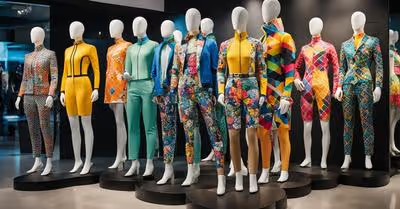























































































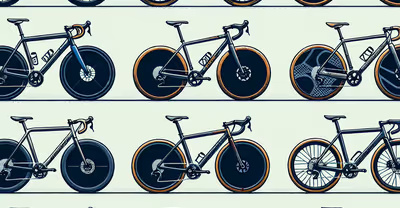

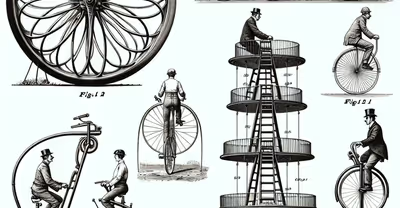

































































































































































































































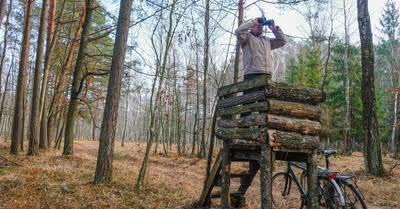














































































































































































































































































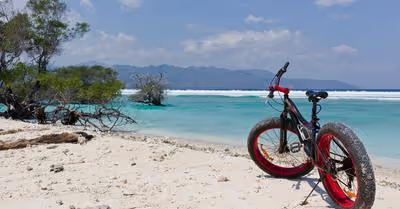


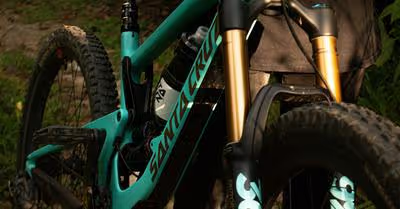


















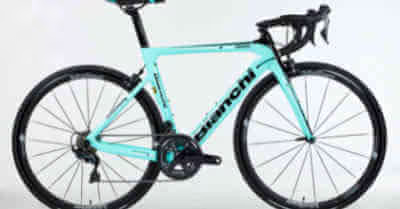



































.avif)
